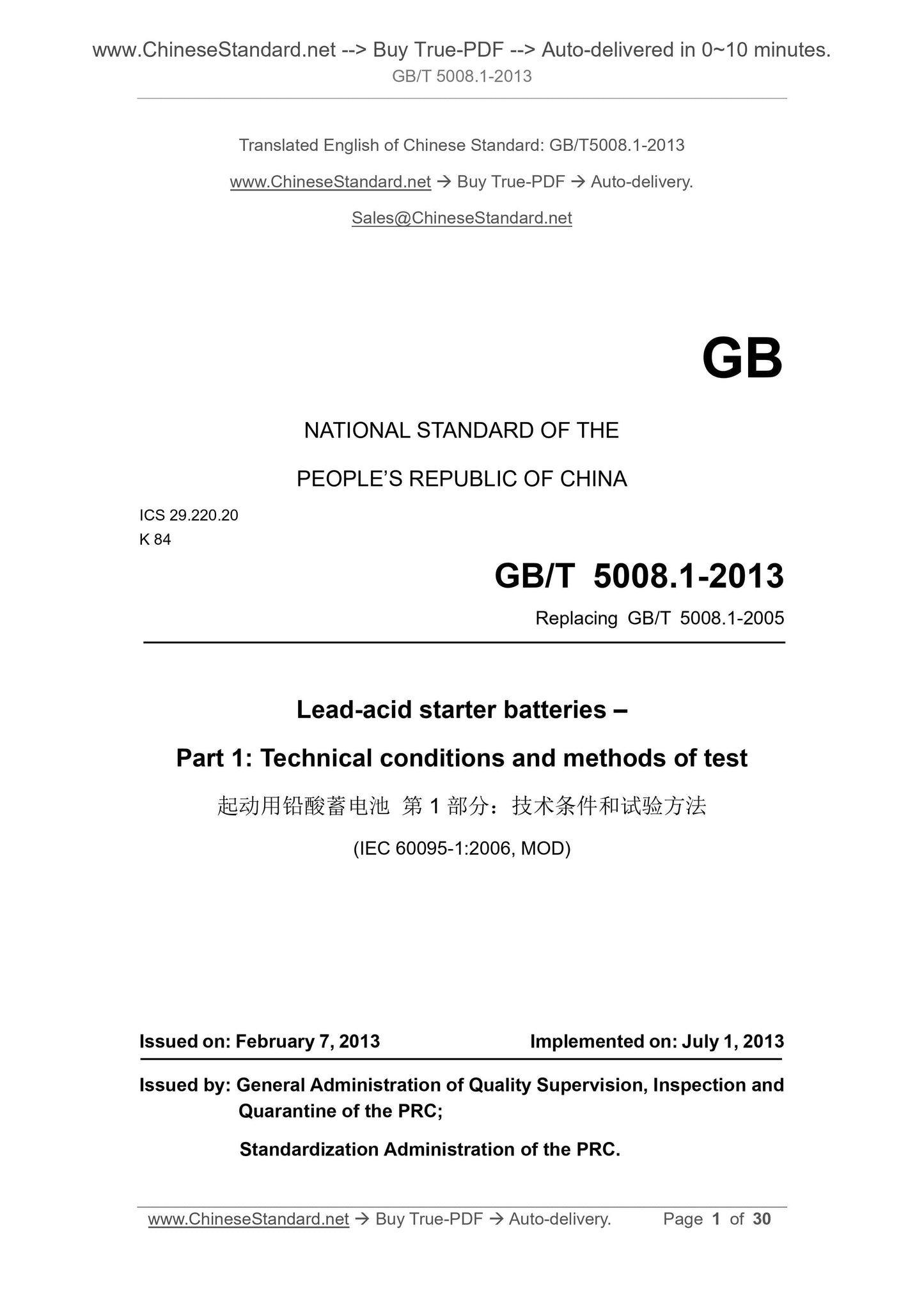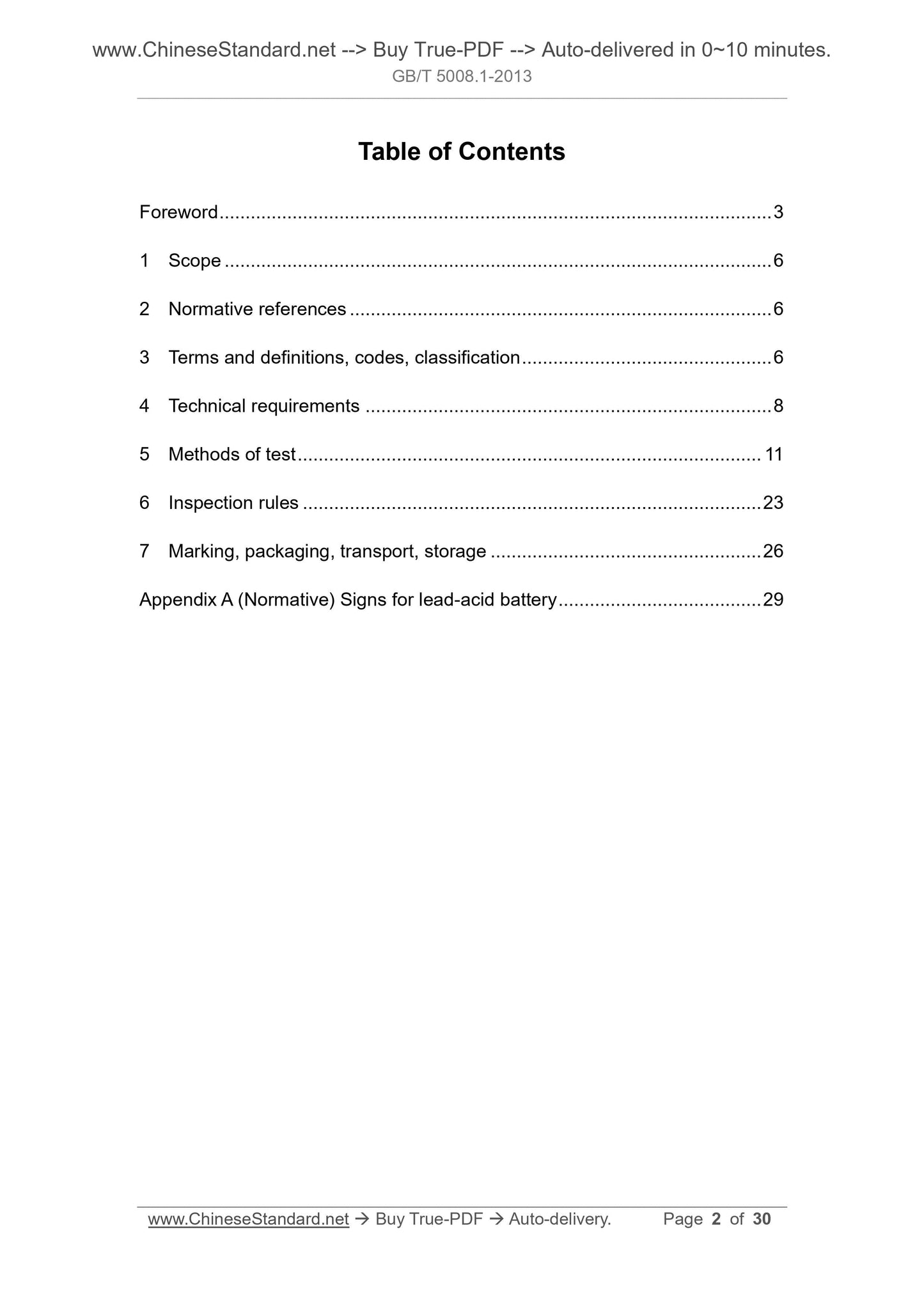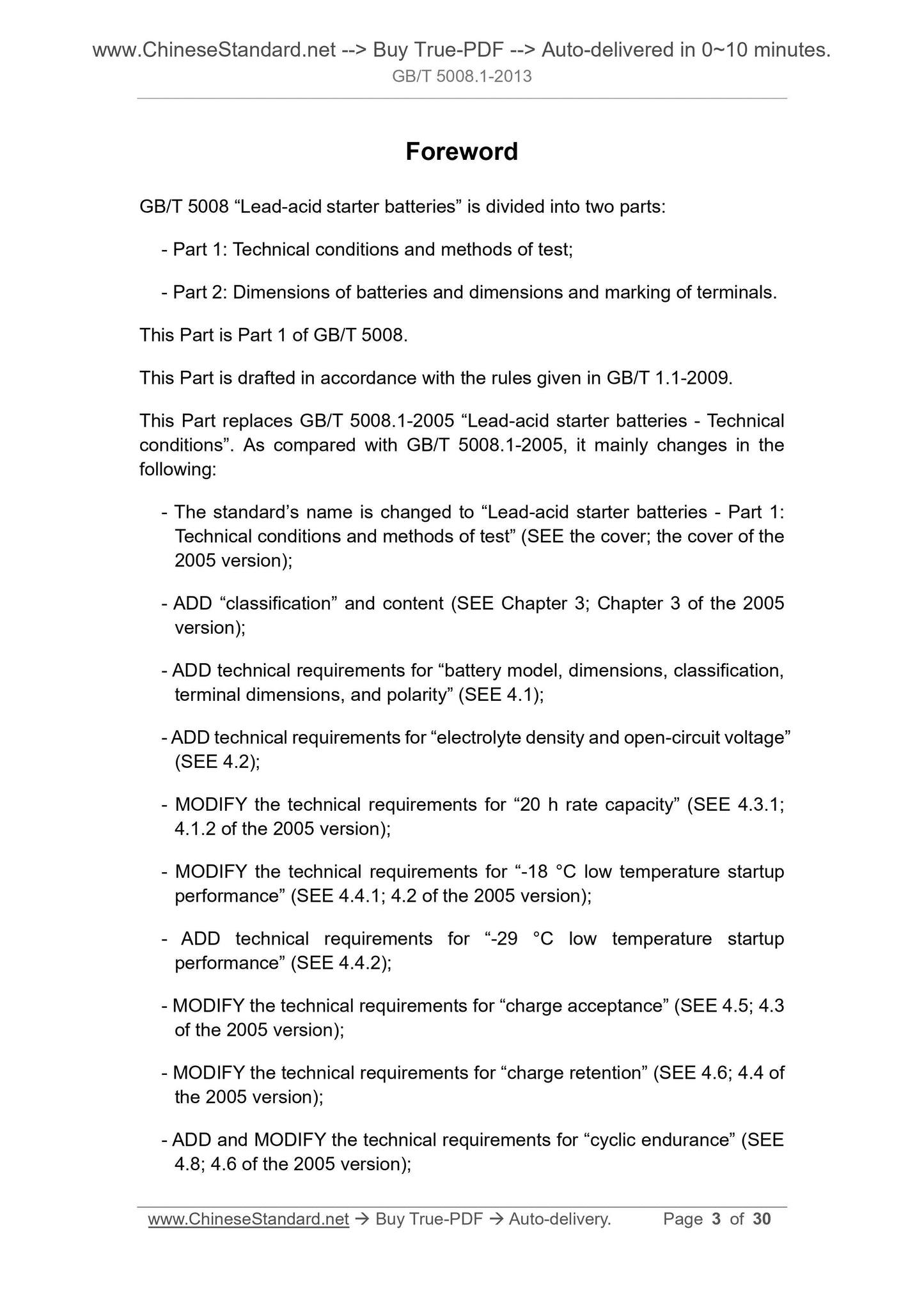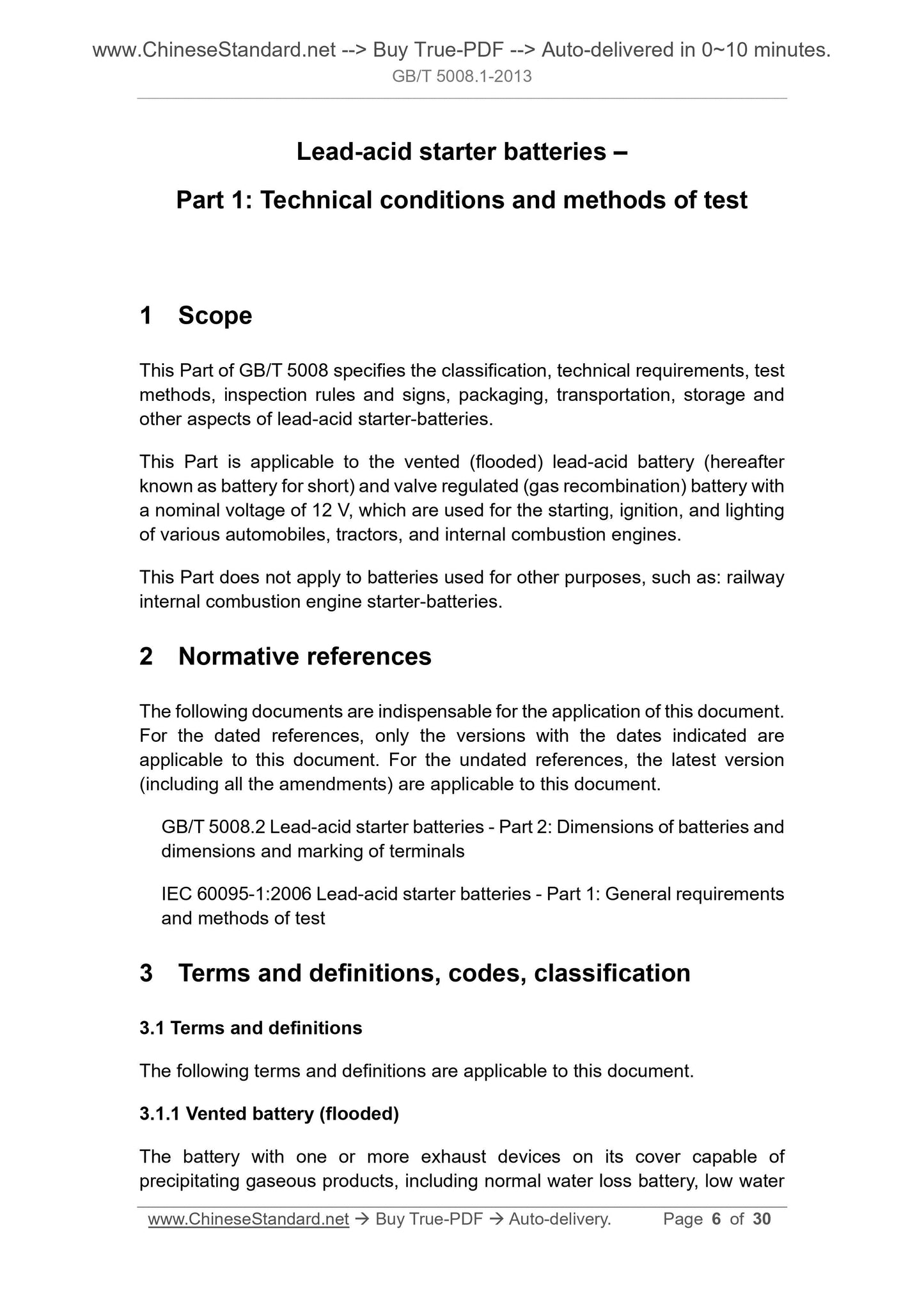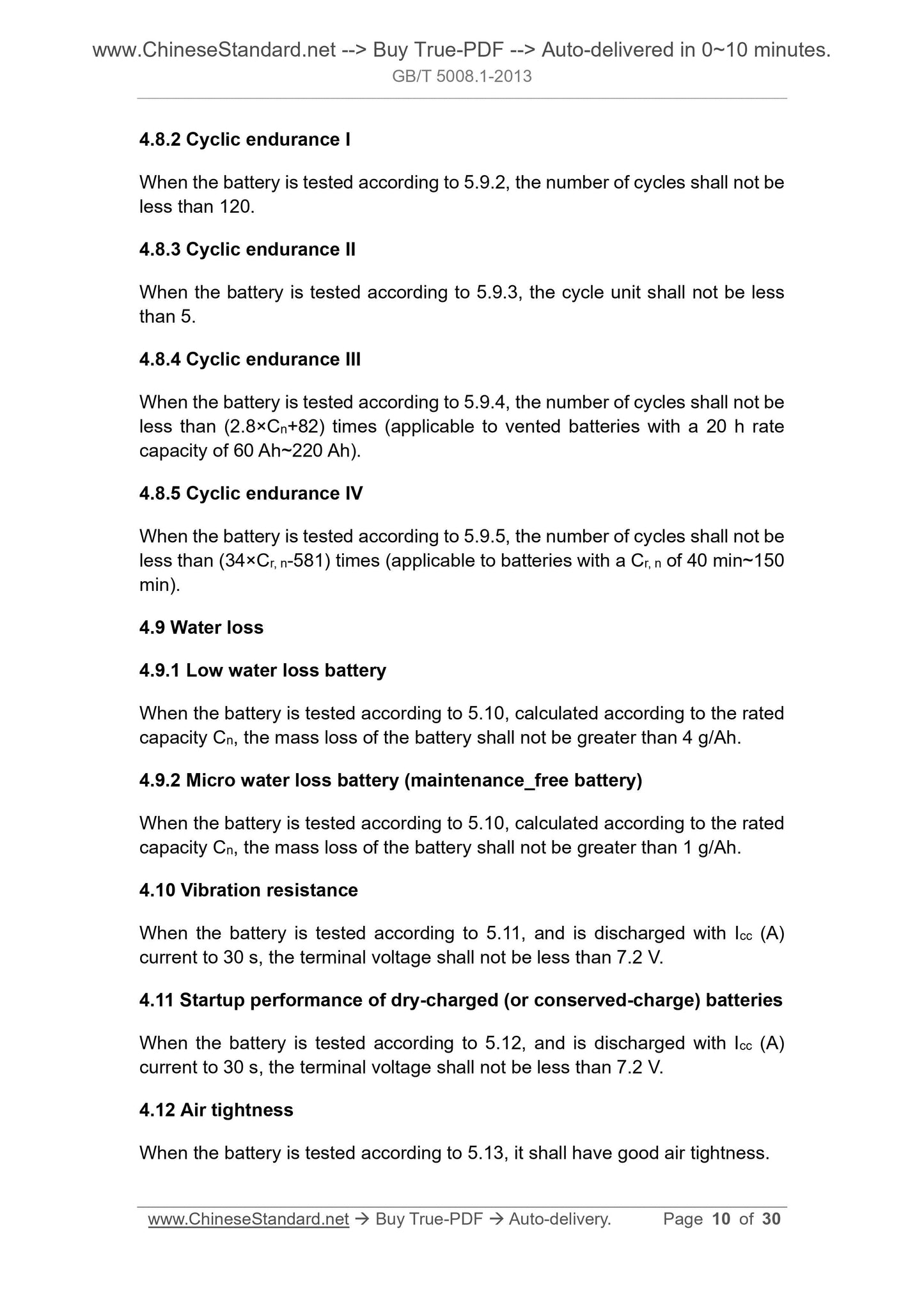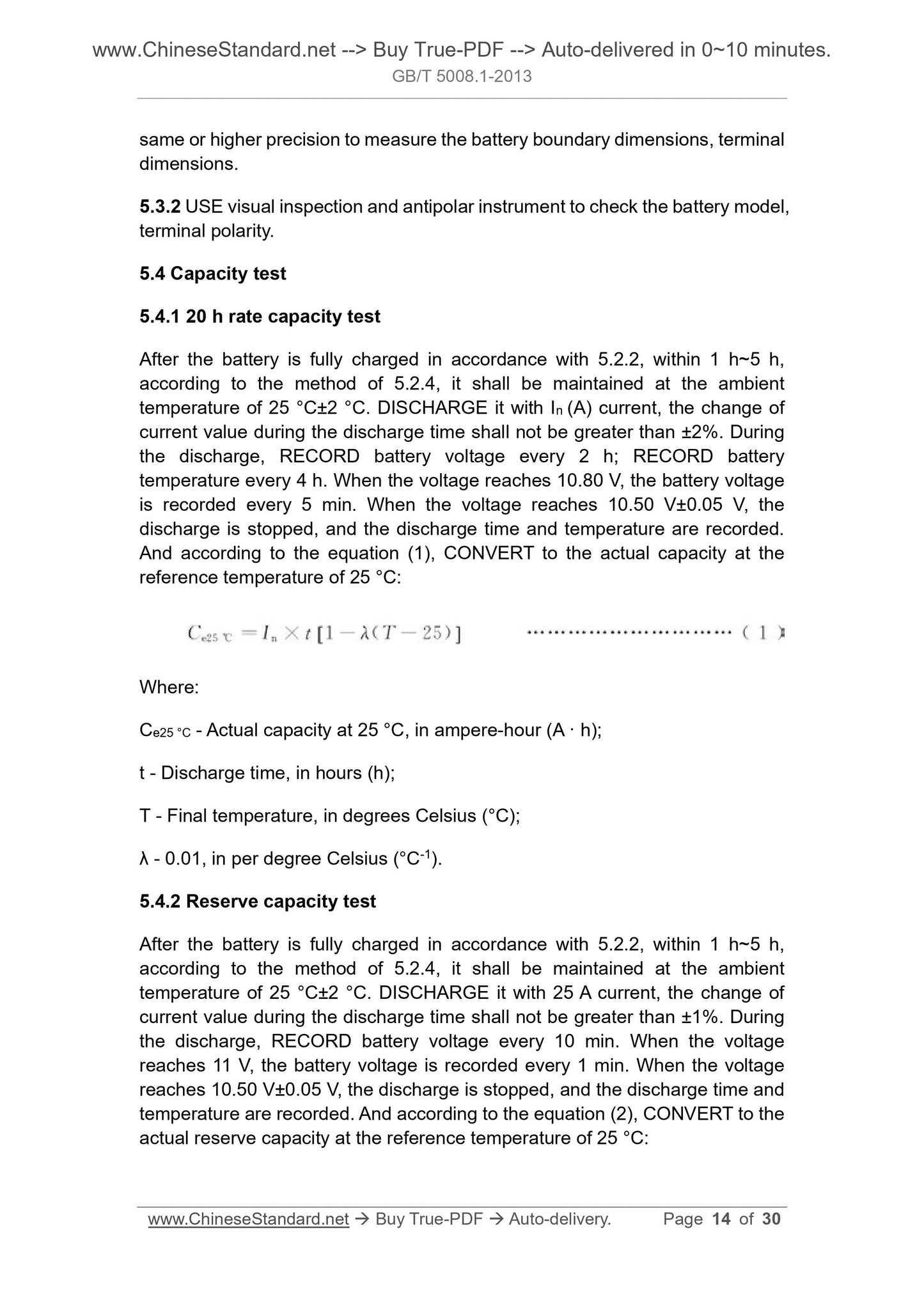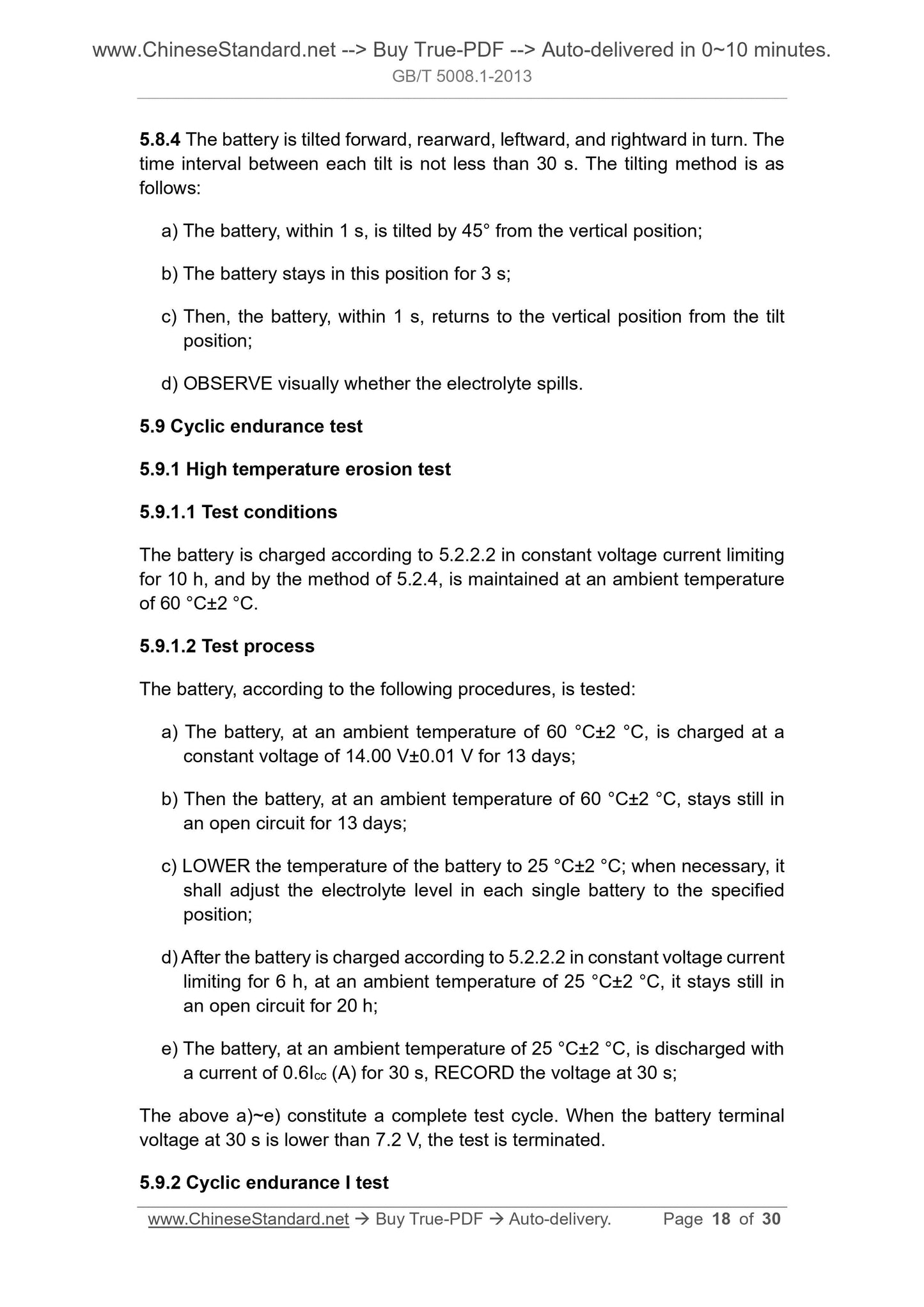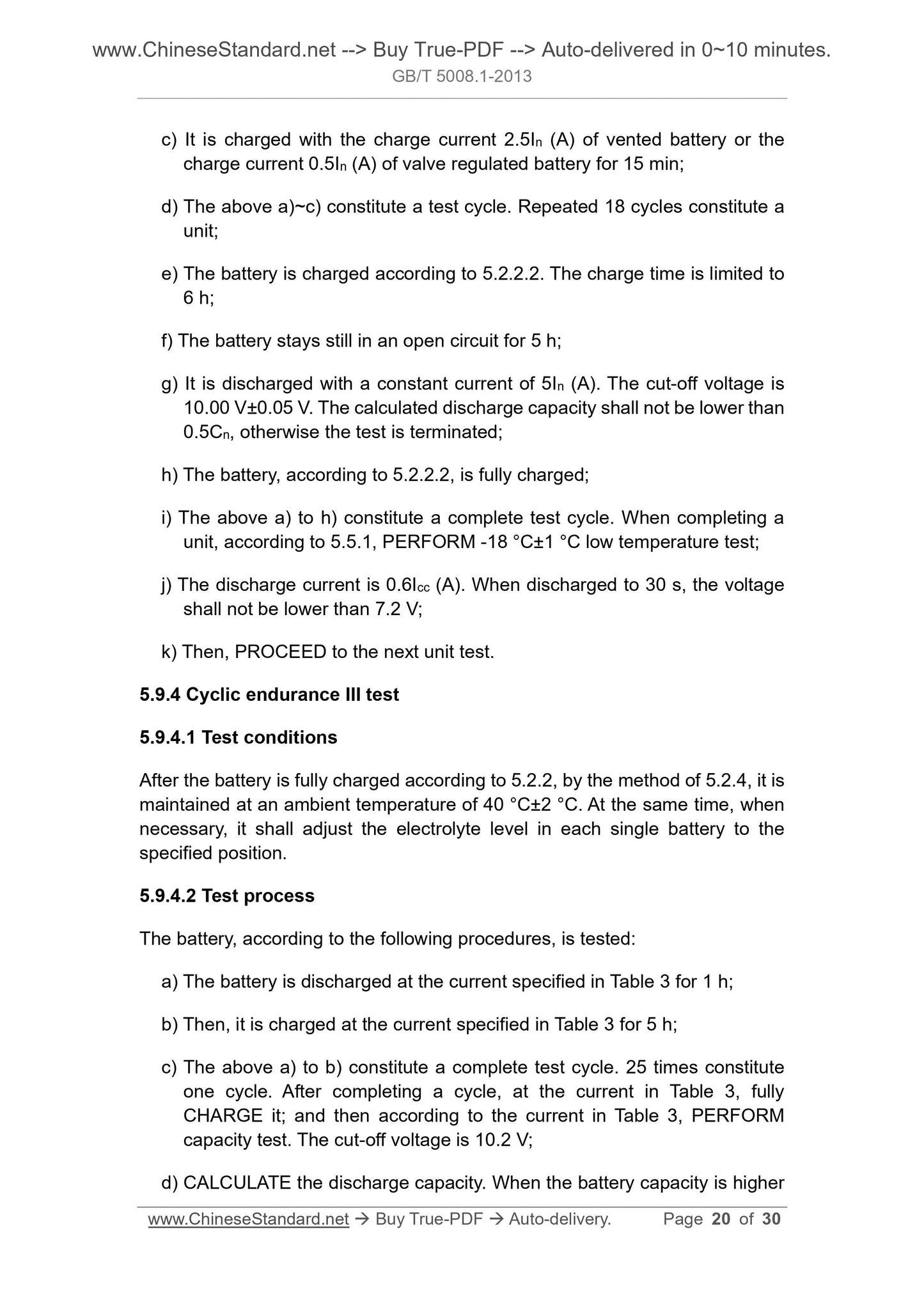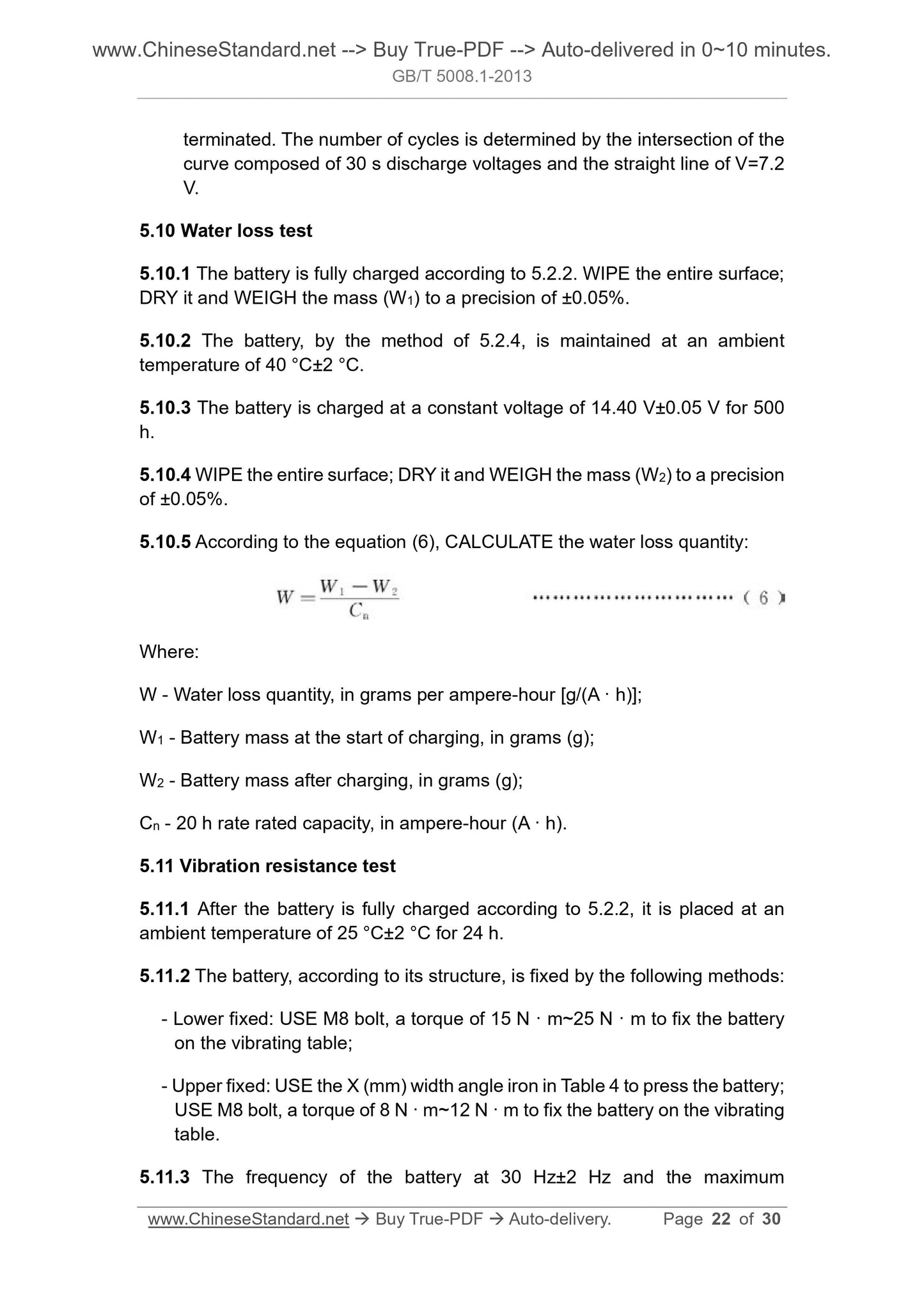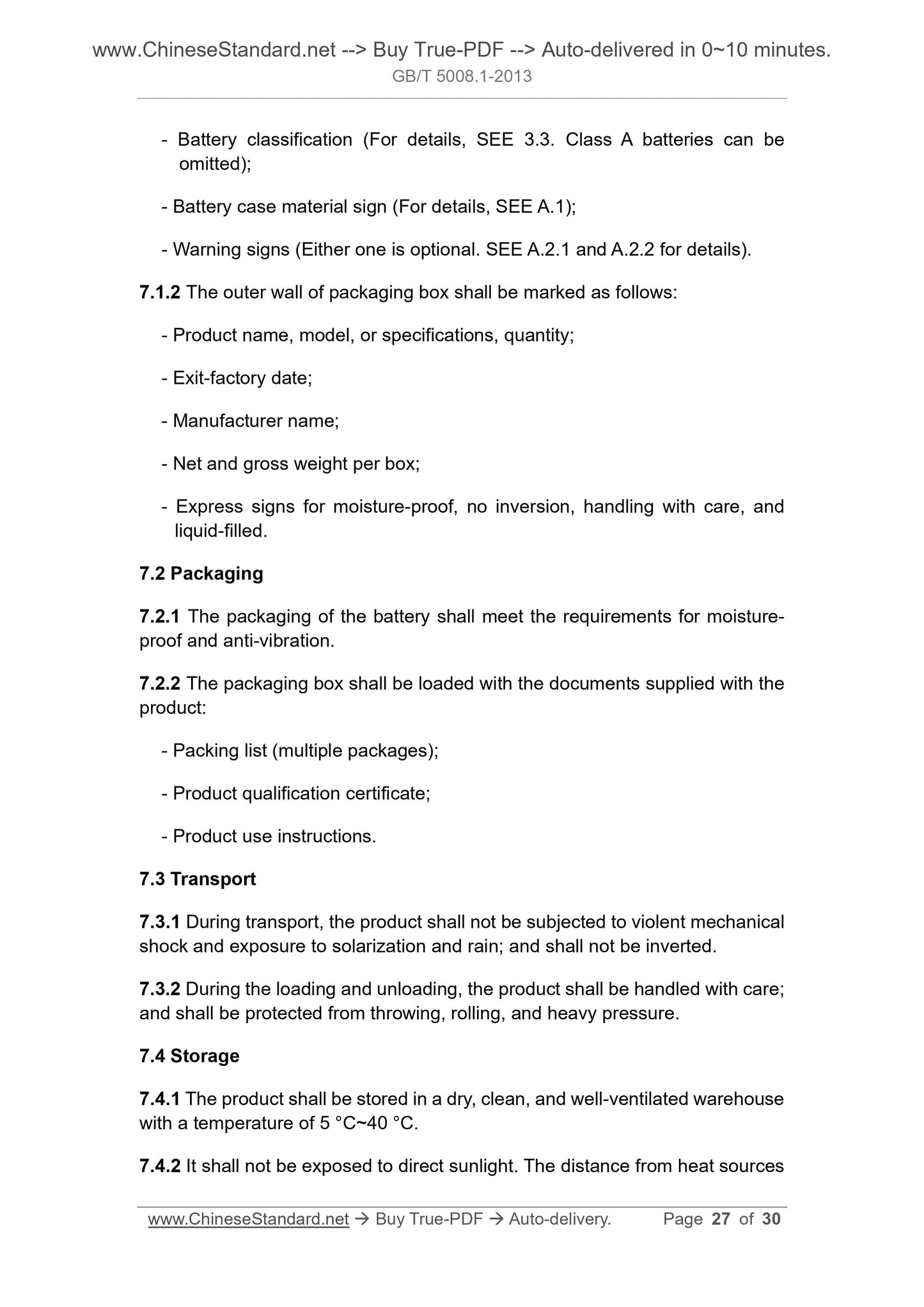1
/
of
10
PayPal, credit cards. Download editable-PDF and invoice in 1 second!
GB/T 5008.1-2013 English PDF (GB/T5008.1-2013)
GB/T 5008.1-2013 English PDF (GB/T5008.1-2013)
Regular price
$145.00
Regular price
Sale price
$145.00
Unit price
/
per
Shipping calculated at checkout.
Couldn't load pickup availability
GB/T 5008.1-2013: Lead-acid starter batteries -- Part 1: Technical conditions and methods of test
Delivery: 9 seconds. Download (and Email) true-PDF + Invoice.Get Quotation: Click GB/T 5008.1-2013 (Self-service in 1-minute)
Newer / historical versions: GB/T 5008.1-2013
Preview True-PDF
Scope
This Part of GB/T 5008 specifies the classification, technical requirements, test methods, inspection rules and signs, packaging, transportation, storage and other aspects of lead-acid starter-batteries.This Part is applicable to the vented (flooded) lead-acid battery (hereafter known as battery for short) and valve regulated (gas recombination) battery with a nominal voltage of 12 V, which are used for the starting, ignition, and lighting of various automobiles, tractors, and internal combustion engines.
This Part does not apply to batteries used for other purposes, such as. railway internal combustion engine starter-batteries.
Basic Data
| Standard ID | GB/T 5008.1-2013 (GB/T5008.1-2013) |
| Description (Translated English) | Lead-acid starter batteries -- Part 1: Technical conditions and methods of test |
| Sector / Industry | National Standard (Recommended) |
| Classification of Chinese Standard | K84 |
| Classification of International Standard | 29.220.20 |
| Word Count Estimation | 21,276 |
| Older Standard (superseded by this standard) | GB/T 5008.1-2005 |
| Quoted Standard | GB/T 5008.2; IEC 60095-1-2006 |
| Adopted Standard | IEC 60095-1-2006, MOD |
| Regulation (derived from) | National Standards Bulletin 2013 No. 2 |
| Issuing agency(ies) | General Administration of Quality Supervision, Inspection and Quarantine of the People's Republic of China, Standardization Administration of the People's Republic of China |
| Summary | This standard specifies the classification of starter batteries, technical requirements, test methods, inspection rules and signs, packaging, transportation, storage and so on. This section applies to the rated voltage of 12V, for a variety of cars, tract |
Share
